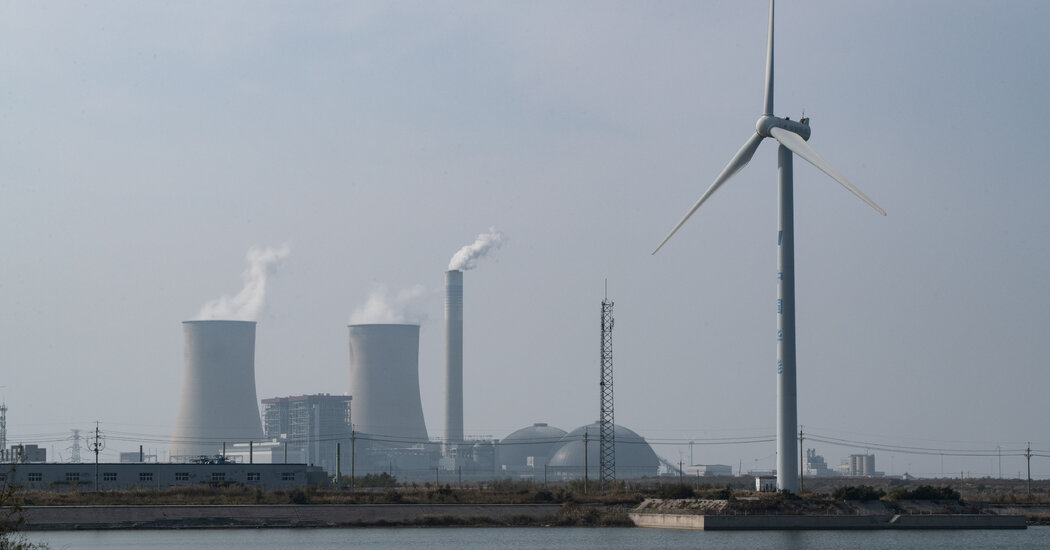[ad_1]
The world’s nations are taking more concrete steps to tackle climate change than ever before, but they are still very far from making the sweeping changes needed to keep global temperatures at relatively safe levels, according to a United Nations report issued on Tuesday.
The annual assessment, known as the Emissions Gap Report, tracks the gulf between national ambitions to fight global warming and what scientists say is needed to stave off catastrophe. That gulf has shrunk slightly over the past year but it remains large.
At least 149 countries have updated their pledges under the 2015 Paris climate agreement to curb their greenhouse gas emissions by 2030, the report found. Nine countries did so this year, including Egypt, Turkey, the United Arab Emirates and Uruguay.
If every single country were to follow through on its stated plans (a big if) then global greenhouse gas emissions would be 2 percent to 9 percent lower at the end of the decade than they are today.
But that would still put Earth on track to heat up roughly 2.5 to 2.9 degrees Celsius over preindustrial levels by the century’s end, the report found. With every fraction of a degree of warming, the risks from deadly heat waves, wildfires, droughts, storms and species extinctions increase significantly, scientists have said.
Under the Paris Agreement, world leaders vowed to hold global warming to “well below” 2 degrees Celsius, and preferably closer to 1.5 degrees Celsius, in order to limit the risks from climate catastrophes. The planet has already warmed roughly 1.2 degrees Celsius.
Current policies don’t come close to meeting those goals, the report found. To stay below 2 degrees Celsius, global emissions would need to fall roughly 29 percent between now and 2030. To stay at 1.5 degrees, global emissions would need to fall about 43 percent.
“We are seeing countries make progress on implementing the climate plans they’ve already announced,” said Anne Olhoff, a climate policy expert based in Denmark and a co-author of the report. “But those plans are still far from sufficient for meeting the Paris Agreement goals.”
The report comes as global temperatures are set to reach the highest levels in recorded history this year. Earth will keep getting hotter and temperature records will keep getting shattered, scientists say, until countries manage to reduce their emissions down to nearly zero.
“The world must change track, or we will be saying the same thing next year — and the year after, and the year after, like a broken record,” Inger Andersen, the executive director of the United Nations Environment Program, wrote in a foreword to the report.
Next week, representatives from nearly 200 countries will converge in Dubai as part of a United Nations climate summit known as COP28. There, diplomats will discuss whether and how to step up action on climate change.
Some countries, including the United States and China, have suggested that nations should seek to triple the amount of renewable energy, such as wind or solar power, installed worldwide by 2030. Others want an international agreement to “phase out” the burning of coal, oil and gas unless their emissions can be captured and buried underground.
Most governments are not expected to unveil new plans to cut emissions at the summit. Instead, countries will need to come back by 2025 with new targets and plans to curb their greenhouse gas emissions by 2035.
But unless countries drastically ramp up action this decade, the United Nations report said, it will become “impossible” to limit global warming to 1.5 degrees Celsius and extremely difficult to stay below 2 degrees. Countries would also have to rely more heavily on still-unproven technologies to vacuum up billions of tons of carbon dioxide from the air.
The report lays out a number of suggestions for further reducing emissions.
The world’s 20 largest economies, known as the Group of 20, still need to put in place additional policies to achieve their stated climate goals. The Biden administration, for instance, has pledged that U.S. emissions will fall 50 percent below 2005 levels by 2030, but the clean energy subsidies approved so far by Congress will only get partway there.
Collectively, the G20 is expected to fall short of its pledges by about 1.2 billion tons of carbon dioxide in 2030 unless further action is taken.
Additionally, more than two-thirds of global emissions now come from developing countries, which are rapidly increasing their use of fossil fuels to lift themselves out of poverty. Many of these countries are saddled with heavy debt loads, and the costs of financing renewable energy projects in places like South Asia or sub-Saharan Africa can be up to seven times as high as they are in the United States or Europe, the report notes.
“International financial assistance will therefore have to be significantly scaled up from existing levels,” the authors noted, “and new public and private sources of capital better distributed toward low-income countries.”
[ad_2]
Source link




